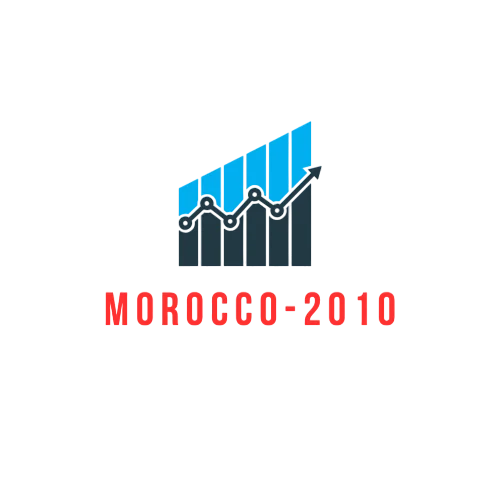Navigating the maze of healthcare payment systems can feel like trying to find a unicorn in a haystack. With rising costs and shifting policies, understanding economic trends in this sector isn’t just useful—it’s essential. From insurance models to out-of-pocket expenses, the landscape is changing faster than a doctor’s appointment can be scheduled.
Table of Contents
ToggleOverview of Healthcare Payment Systems
Healthcare payment systems encompass various methods for financing care, significantly impacting providers and patients. Fee-for-service models, prevalent in the United States, charge separately for each service rendered, often leading to increased healthcare costs. Capitation approaches provide a fixed payment for a patient’s care, encouraging providers to focus on preventive measures.
Bundled payments cover a group of services for an episode of care, promoting efficiency and value. Value-based care emphasizes patient outcomes over the number of services provided, aligning financial incentives with quality care delivery. Due to rising costs, more patients experience a shift towards high-deductible health plans, resulting in increased out-of-pocket expenses.
Insurance models vary, with managed care plans like HMOs and PPOs emphasizing cost containment through network restrictions. Government programs such as Medicare and Medicaid aim to provide coverage for specific populations, often influencing healthcare payment trends. Increased scrutiny on pricing transparency has led providers to disclose costs upfront to patients, fostering informed decision-making.
In 2023, total healthcare spending in the U.S. reached approximately $4.3 trillion, highlighting the necessity for efficient payment systems. The need for innovative payment models surface as stakeholders strive to address unsustainable spending patterns. As regulations shift, adjustments in payment systems become crucial for the sustainability of healthcare services. Understanding these systems aids stakeholders in navigating the complex financial landscape of healthcare.
Current Economic Trends
Rising costs and changing policies create a dynamic healthcare payment landscape. Stakeholders must analyze recent economic trends affecting the system.
Shift to Value-Based Care
Providers increasingly adopt value-based care models, promoting patient outcomes over service quantity. Such frameworks emphasize quality, leading to better health results and cost management. The transition supports preventive services, allowing patients to receive necessary care early, which reduces long-term expenses. Programs that reward providers for achieving specific health metrics gain traction, guiding investment towards effective treatments. Economically, value-based care aligns incentives among stakeholders, fostering collaboration to improve overall care efficiency.
Impact of Technology on Payments
Technological advancements redefine the payment systems in healthcare. Digital tools facilitate more efficient data collection and processing, resulting in quicker claims payments. Electronic health records enable providers to track patient outcomes and streamline billing processes. Telehealth services increase access to care, influencing reimbursement models to adapt quickly. Additionally, data analytics support payment transparency, helping patients understand costs and insurance coverage. Overall, technology plays a crucial role in reshaping financial interactions within the healthcare sector, promoting efficiency and clarity.
Challenges in the Healthcare Payment System
The healthcare payment system faces significant challenges, impacting both providers and patients. Understanding these difficulties remains essential in navigating the complexities of financial interactions in healthcare.
Cost Containment Issues
Rising costs in healthcare continue to strain budgets for institutions, insurers, and patients. Medical expenses often escalate due to factors like advanced technology, new treatment options, and administrative overhead. The fee-for-service model primarily contributes to these rising costs, as it encourages a higher volume of services rather than focusing on the quality of care. Patients can struggle with affordability, particularly under high-deductible health plans that increase out-of-pocket expenses. Innovative payment models such as bundled payments or value-based care are crucial for reducing overall expenditures while maintaining or improving care quality.
Regulatory Changes
Ongoing regulatory changes frequently reshape the healthcare payment landscape. The introduction of policies focused on value-based care forces providers to adapt quickly, shifting away from traditional payment methods. Significant legislation impacts how programs like Medicare and Medicaid reimburse services, creating uncertainty for healthcare providers. Frequent updates to regulations often lead to confusion and compliance challenges for stakeholders. Staying informed about evolving laws and guidelines is vital for providers to navigate reimbursement frameworks effectively and ensure sustainable operations within the system.
Future Predictions
Emerging trends in the healthcare payment system indicate a shift toward innovative models that enhance care delivery. These models, such as value-based care, promote better health outcomes by rewarding providers for quality rather than quantity of services. Additionally, bundled payment approaches emerge, streamlining costs for specific treatments or conditions, creating transparency for patients and providers alike.
Patient financing plays a significant role in the evolving landscape of healthcare payments. Consumers increasingly seek flexible payment options that suit their financial situations. Services like medical credit cards and payment plans provide patients accessibility to necessary care without the burden of immediate, full payments. Many healthcare providers adopt these financing solutions to improve patient satisfaction while reducing the likelihood of unpaid bills. Embracing such financing options signifies a vital adaptation within the healthcare sector, addressing rising out-of-pocket expenses and enhancing overall patient engagement.
The healthcare payment system is undergoing significant transformation driven by economic trends and evolving consumer expectations. As stakeholders adapt to new models like value-based care and bundled payments, the focus shifts towards improving patient outcomes while managing costs.
Technological advancements play a crucial role in enhancing transparency and streamlining processes, which ultimately benefits both providers and patients.
With rising costs and regulatory changes continuing to shape the landscape, staying informed and flexible is essential for navigating this complex environment. The future of healthcare payments will likely prioritize innovative solutions that balance quality care with financial sustainability.





